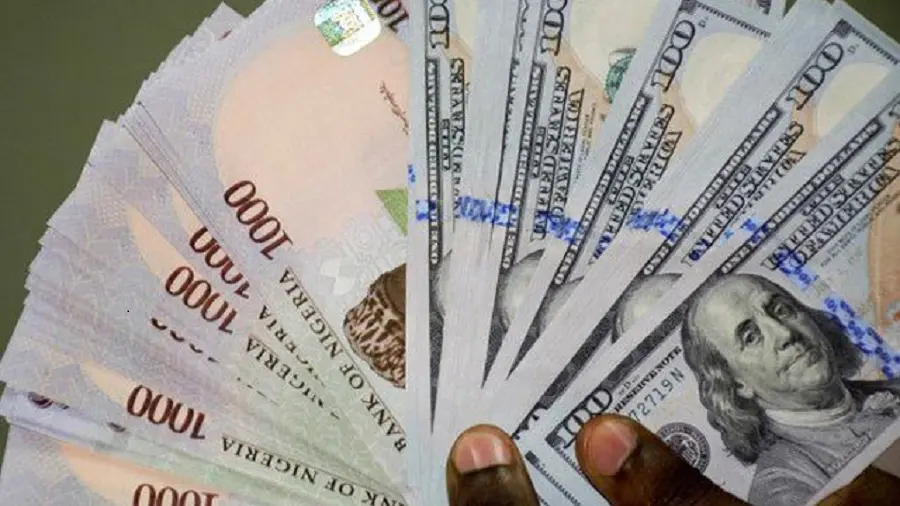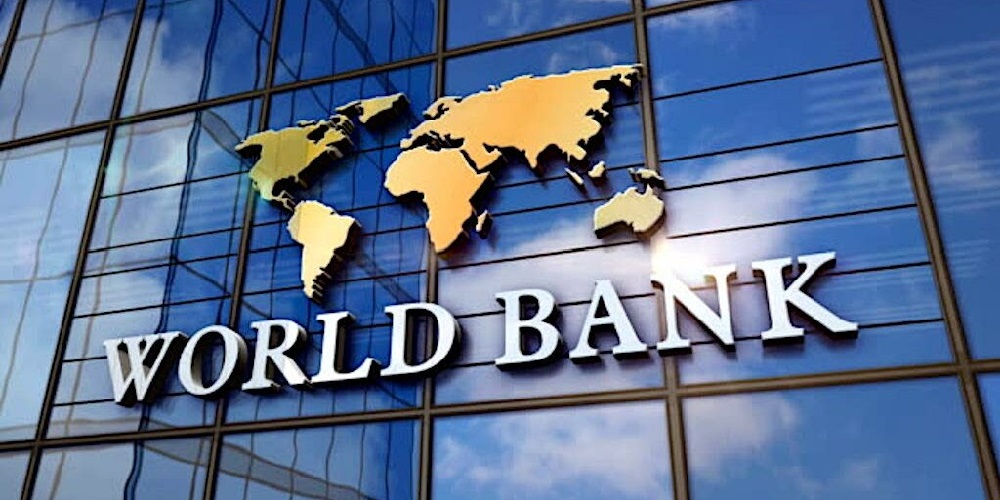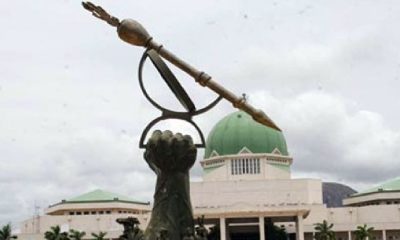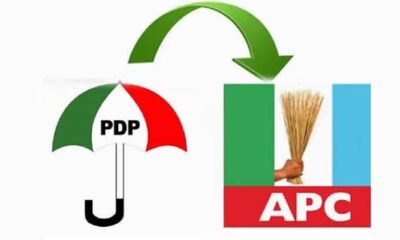Economy
Naira Falls Against Dollar Despite Renewed CBN Actions

The Nigerian naira experienced a mixed performance on October 25, 2024, with a slight depreciation in the parallel market and a notable gain in the official market. The currency weakened by 0.12% against the US dollar, trading at N1,730/$1 in the parallel market—a marginal decline of N2 from the previous rate of N1,728.
This marks the second consecutive day of depreciation following a 0.58% appreciation on October 23, when the naira was valued at N1,725/$1. Meanwhile, in the Investors and Exporters (I&E) window, the naira reversed a threeday depreciation streak, closing at N1,601.20/$1, a 3.30% improvement from the prior close of N1,654.09.
Since October 15, the naira has consistently traded above the N1,600 threshold in the official market. The gap between the parallel market rate and the official rate has widened significantly, increasing to N128.80, up from the previous day’s difference of N73.91. Additionally, data from the Nigeria Association of Financial Markets Institutions (NAFEM) revealed a 69% surge in foreign exchange transactions, totalling $230.99 million, compared to $136.68 million previously.
CBN Reserves and Policy Measures
The Central Bank of Nigeria’s (CBN) external reserves saw a 0.188% rise to $39.230 billion on October 22, 2024, marking the ninth consecutive day of growth. Recent CBN policies, including interest rate hikes aimed at curbing inflation and stabilising the economy, appear to be stabilising the domestic currency. The CBN has also cleared backlogs of foreign exchange obligations, including payments to airlines.
Market Trends
Throughout 2024, the naira has faced sustained depreciation, losing over 50% of its value since the beginning of the year in the official market. In January, the currency traded at N838.95/$1 and breached the N1,500/$1 mark in February. A brief rally in March saw it recover to N1,300.43/$1, before reaching a record low of N1,660.5/$1 in October.
In the parallel market, the naira started the year at N1,215 per dollar, reaching an alltime low of N1,880 in February before recovering to N1,110 in April. However, it has since resumed a downward trajectory, recently dipping into the N1,700 range.
Key Data Points
On October 24, 2024, the naira traded as high as N1,696 per dollar and as low as N1,585.43/$1, reflecting a disparity of N110.57 before settling at N1,601.20 in the I&E window.
By October 25, the naira traded at N1,730 per dollar in the parallel market, indicating a slight 0.12% decline from the previous day’s rate of N1,728.
In the I&E window, the currency closed at N1,601.20/$1, demonstrating a 3.30% improvement from the prior close of N1,654.09.
Trading volumes in the I&E window surged, reaching $230.99 million compared to $136.68 million the day before, highlighting increased market activity and dollar demand.
Key Factors at Play
During a recent press briefing at the ongoing World Bank/IMF meetings, the newly launched Global Financial Stability Report underscored signs of stability in the Nigerian naira, largely attributed to recent CBN policies. The International Monetary Fund (IMF) noted that the naira’s steadiness results from actions taken by the CBN, including clearing the foreign exchange backlog and raising interest rates.
The report indicated that these policy measures have led to positive developments, contributing to the naira’s improved stability.
What to Expect
With the naira recently breaching the N1,700/$1 mark, there is potential for a shortterm recovery. Global oil prices have stabilised between $79 and $81 per barrel, and the CBN’s consistent interventions may alleviate some inflationary pressures, fostering a more positive outlook for the naira. Additionally, new policies aimed at reducing foreign exchange demand could further support the currency, potentially bringing it back into the N1,600/$1 range in the near term.
Notably, the official exchange rate closed at N1,601.20 on October 25, following the CBN’s $60 million intervention in the official market on October 17, when dollars were sold to deposit banks at N1,540.
Nevertheless, the naira’s trajectory will remain closely tied to broader macroeconomic factors, including inflationary pressures and foreign currency supply. As Nigeria navigates these challenges, the effectiveness of policy responses will be crucial in determining whether the naira stabilises or faces further depreciation.
Economy
75.5% of rural Nigerians now live below poverty line — World Bank

The World Bank has disclosed that a staggering 75.5 per cent of rural Nigerians are now living below the poverty line, reflecting deepening hardship in the country’s hinterlands.
This was revealed in the Bank’s April 2025 Poverty and Equity Brief for Nigeria, which paints a grim picture of worsening economic hardship, widening inequality, and persistent underdevelopment across much of the nation.
While poverty is widespread among urban populations, the report emphasised that the situation is significantly worse in rural areas, where economic stagnation, high inflation, and insecurity have exacerbated living conditions.
“Based on the most recent official household survey data from Nigeria’s National Bureau of Statistics, 30.9 per cent of Nigerians lived below the international extreme poverty line of $2.15 per person per day in 2018/19 before the COVID-19 pandemic,” the report stated.
The report also highlighted Nigeria’s enduring regional disparities. “Nigeria remains spatially unequal. The poverty rate in northern geopolitical zones was 46.5 per cent in 2018/19, compared with 13.5 per cent for southern ones. Inequality measured by the Gini index was estimated at 35.1 in 2018/19.
“Nigeria’s Prosperity Gap — the average factor by which individuals’ incomes must be multiplied to attain a prosperity standard of $25 per day for all — is estimated at 10.2, higher than most peers.”
Despite successive policy interventions, these figures underscore a persistent economic divide across the country.
The report’s demographic analysis found that children aged 0 to 14 years had a poverty rate of 72.5 per cent, reflecting the scale of deprivation among the youngest segment of the population.
Gender disparities were also observed, with 63.9 per cent of females and 63.1 per cent of males classified as poor under the $3.65 per day lower-middle-income threshold.
Education emerged as a significant determinant of poverty, with Nigerians lacking formal education experiencing a poverty rate of 79.5 per cent. This contrasts with 61.9 per cent for those with primary education and 50.0 per cent for secondary school graduates. Only 25.4 per cent of those with tertiary education were considered poor.
The report also drew attention to multidimensional poverty indicators, which further reflect widespread deprivation.
According to the World Bank, about 30.9 per cent of Nigerians live on less than $2.15 daily, 32.6 per cent lack access to limited-standard drinking water, 45.1 per cent do not have limited-standard sanitation, and 39.4 per cent have no electricity.
Education access remains a challenge, with 17.6 per cent of adults yet to complete primary education, and 9.0 per cent of households reporting at least one school-aged child not enrolled in school.
The report noted that even before the COVID-19 pandemic, efforts to reduce extreme poverty had largely stalled.
“Before COVID-19, extreme poverty reduction had almost stagnated, dropping by only half a percentage point annually since 2010. Living standards of the urban poor are hardly improving, and jobs that would allow households to escape poverty are lacking,” the report read.
Although the World Bank acknowledged recent economic reforms aimed at stabilising Nigeria’s macroeconomic outlook, it warned that persistently high inflation continues to undermine household purchasing power, particularly in urban areas where incomes have not kept pace with rising costs.
In light of the worsening situation, the Bank called for urgent policy action to shield vulnerable groups from inflationary shocks and to drive job creation through more productive economic activities.
Economy
Naira Records Marginal Decline Against Dollar at Official Market

The Nigerian naira experienced a mild drop in value on Friday, closing at ₦1,602.18 per dollar in the official foreign exchange market, based on figures released by the Central Bank of Nigeria (CBN).
This marks a decrease of ₦5.49 from the rate of ₦1,596.69 recorded on April 30, the last trading day before the May 1 Workers’ Day holiday—indicating a depreciation of approximately 0.34%.
Earlier in the week, from Monday to Wednesday, the naira remained relatively stable, exchanging at ₦1,599.95, ₦1,599.71, and ₦1,596.69 respectively.
Although the local currency showed some consistency mid-week, it wrapped up the week with a loss, following a sligh dip of 0.02% at the beginning of the week
Economy
Black Market Dollar hits N1,610 Amid Economic quagmire

What is the Dollar to Naira Exchange Rate in the Black Market (Also Known as the Parallel Market or Aboki FX)?
Below is the black market exchange rate for the U.S. dollar to the Nigerian naira as of Thursday, May 1, 2025. These are the typical rates at which you can exchange dollars for naira:
Dollar to Naira Black Market Exchange Rate (May 1, 2025):
At the Lagos Parallel Market, also referred to as the black market, Bureau De Change (BDC) operators are buying dollars at ₦1,602 and selling at ₦1,610, according to market sources.
Please note: The Central Bank of Nigeria (CBN) does not recognize or endorse transactions conducted on the parallel market. The CBN advises individuals and businesses seeking foreign exchange to use official banking channels.
-

 Opinion4 hours ago
Opinion4 hours agoRIVERS, WIKE, FUBARA, AND THE WAY FORWARD
-

 News24 hours ago
News24 hours agoReps Minority Caucus condemns unlawful detention of VDM, demands his immediate release
-

 News14 hours ago
News14 hours agoMinistry denies awarding N13bn contracts without due process
-

 News14 hours ago
News14 hours agoFULL STEPS: How to check 2025 JAMB results
-

 News8 hours ago
News8 hours agoVDM may be released on Tuesday
-

 Politics3 hours ago
Politics3 hours agoJust in: Delta PDP Reps members defect to APC
-

 News14 hours ago
News14 hours agoCourt halts Abuja multi-million naira market project
-

 News22 hours ago
News22 hours agoCourt delivers another judgement in favor of Amaewhule, others on Rivers Assembly crisis






